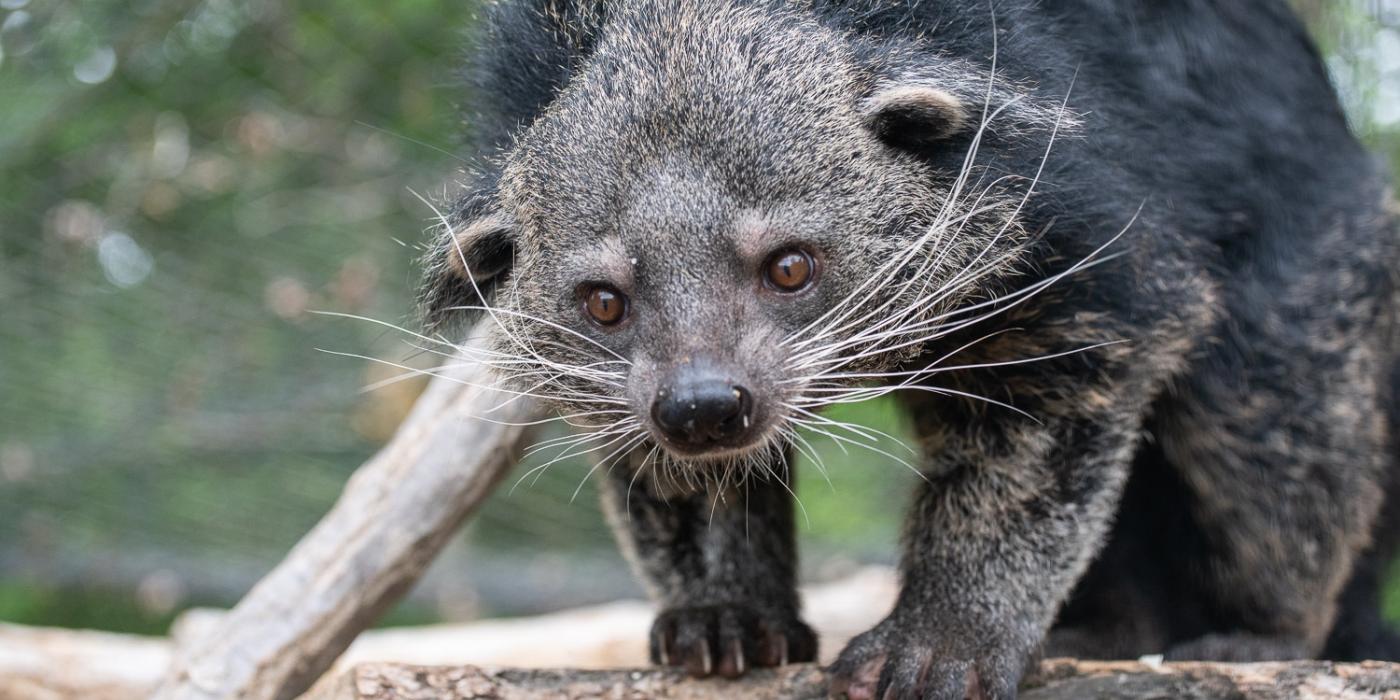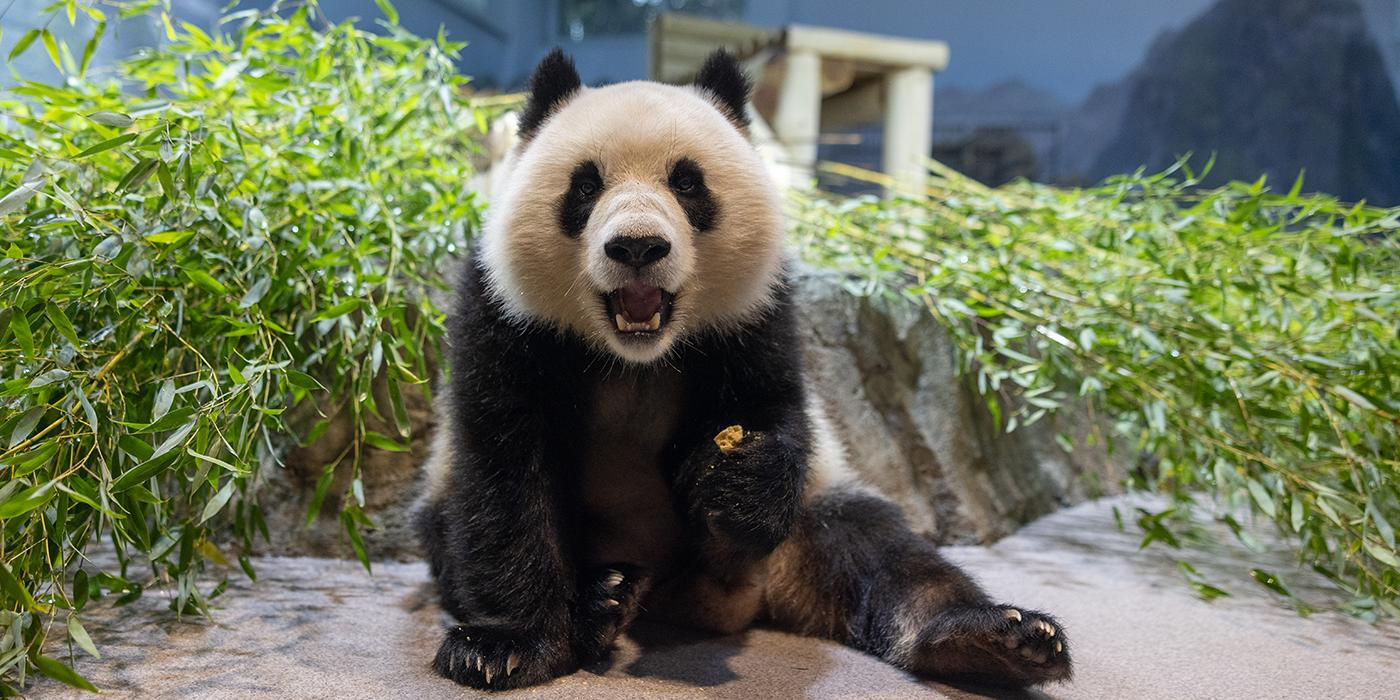How to Care for Orangutans
Swing along with primate keeper Emily Bricker and find out what it takes to care for the largest arboreal mammal. Emily works with a variety of primates, from siamangs, lemurs and swamp monkeys to western lowland gorillas and orangutans. Here, she shares her stories about caring for orangutans.
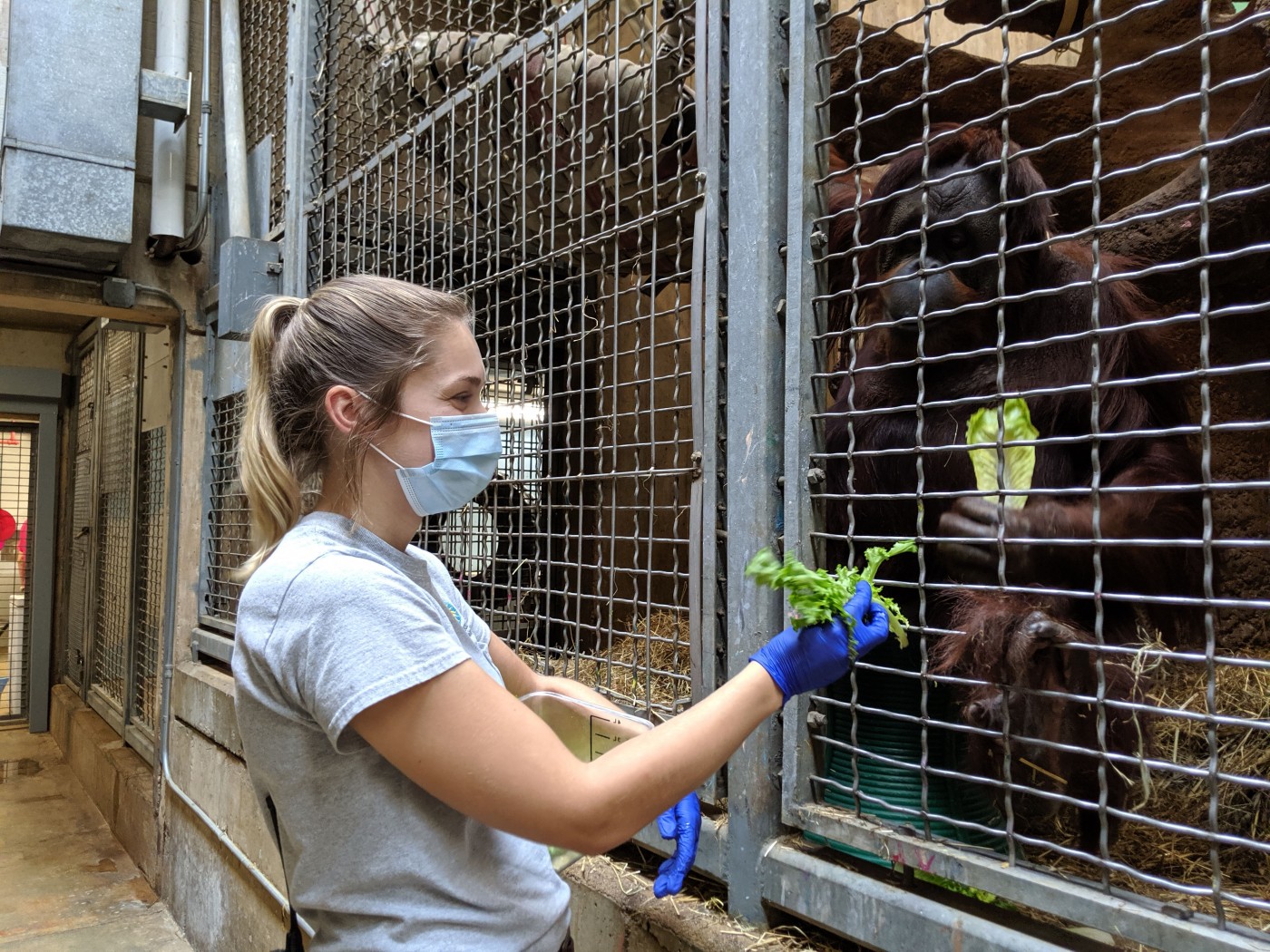
Keepers are experts in interpreting the behavior of the animals they care for. We are always assessing animal welfare, health and safety. It’s a challenging job at times, but just about every day, I have a moment with one of my animals that is so rewarding, it makes all of the hurdles worth it.
Orangutans are extremely smart and incredibly strong. I feel privileged to be trusted with the responsibility of caring for these critically endangered animals. As a primate keeper, my main priority is keeping them healthy and ensuring that their day-to-day activities are physically and mentally stimulating.

One way we can keep our orangutans stimulated is through enrichment. They receive a minimum of four types of enrichment every day, ranging from puzzle feeders and training sessions with keepers to things like bubbles and novel items, like Slinkys and scrub brushes. They even participate in cognitive research studies, which involve fun memory games for the orangutans and help scientists understand their thought process.
Each of our orangutans has an individual and distinct personality. One orangutan’s favorite enrichment is not necessarily the same as another’s. Lucy, our 47-year-old orangutan, seems to enjoy rubber tubs filled with bubbles and wrapping herself in large sheets of paper. Our 4-year-old orangutan, Redd, will spend a lot of time playing in his ball pit, tossing the toys all over his enclosure. Bonnie, our 43-year-old orangutan, gets excited when we give her small brooms and dustpans. She will spend hours sweeping her habitat!
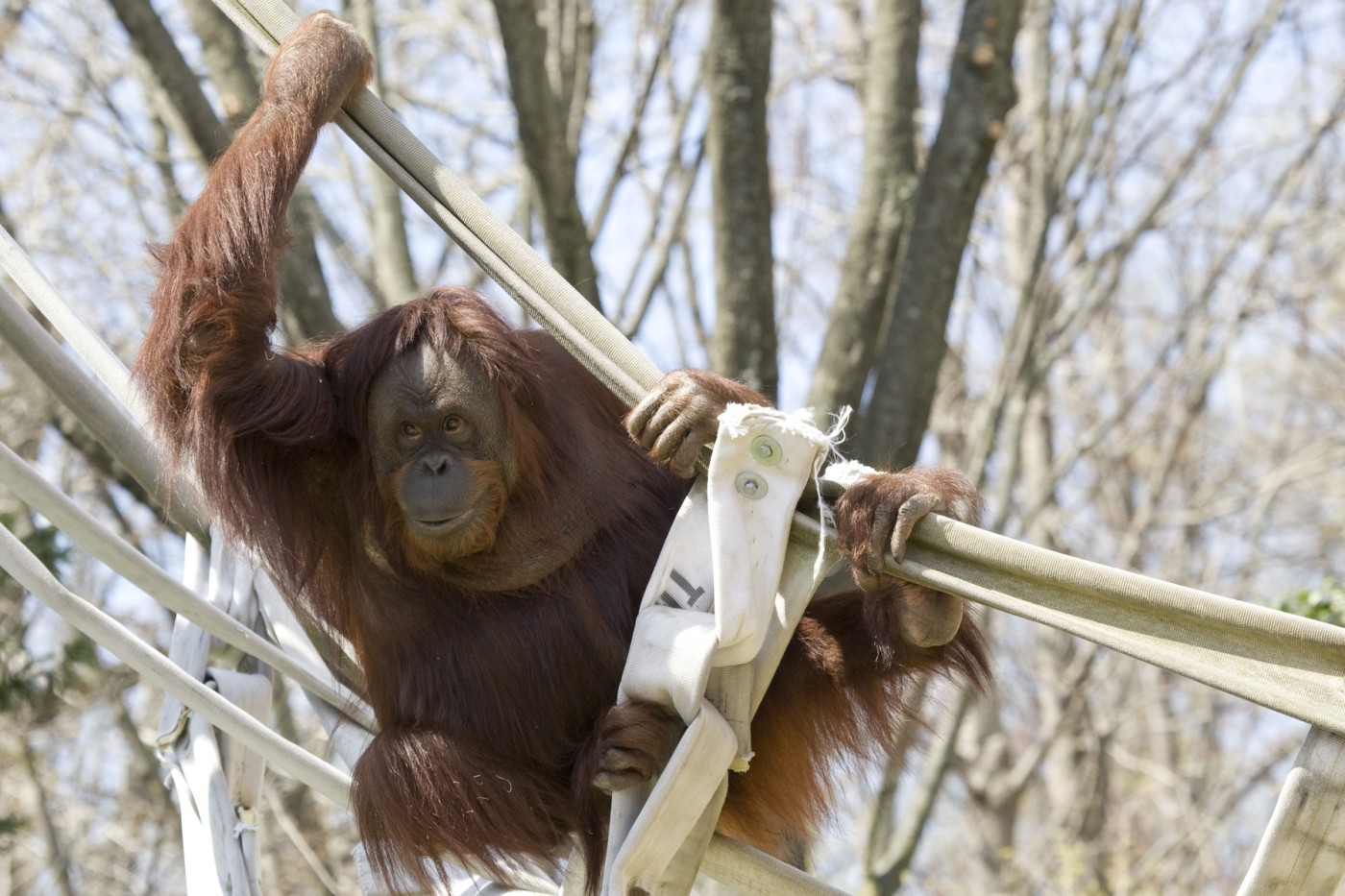
Toys aren’t the only way our orangutans fill their day. They also socialize with one another! Orangutans in the wild are semi-solitary. In zoos, though, they don’t have to compete with one another over resources like food. This makes them more open to spending time together. Mixing up their social networks once in a while encourages them to keep physically active and mentally sharp.
Our situation is pretty unique in that we have four female orangutans, two adult males and one juvenile male. Not many zoos have as many orangutans as we do. This enables us to give our animals the opportunity to socialize with one another, if they so choose.
Watching how the orangutans behave when they are not sharing the same space helps inform us whether or not we should put them together. Are they looking at each other all the time? Is one individual refusing to move enclosures because they seem to want to be adjacent to another? How do they interact with one another at a shared door? We take all these behaviors into account.
A significant component of caring for orangutans is allowing them to take part in their care. Our training program is completely voluntary and the orangutans do not have to participate if they do not want to. However, most will do almost anything for a banana or small cup of honey. This allows our orangutans, and other primates at the zoo, to take an active role in their own medical care and gives them more control over their environment.
As part of our positive reinforcement training program, our orangutans are trained to show us their teeth and different body parts for examination, as well as sit for vaccinations and blood draws. We even taught them to use a device that records their heart rate and electrocardiogram (ECG) information.Orangutans are arboreal animals and spend the majority of their time in trees. The O-line helps elicit this natural behavior. They can cross the towers and ropes as they would trees in their native habitat. Our orangutans can choose where and with whom they prefer to spend their time just by taking a trip between the Great Ape House and Think Tank! Giving orangutans choice and control over their environment is an essential component of our enrichment program and helps maximize their welfare.
Washington, D.C.’s summers mirror orangutans' very warm and tropical natural climate. Winters are a different story, so temperature guidelines tell us when it is safe for our orangutans to go outside. Orangutans’ hair is similar to ours — it offers some protection from the sun and insects but won’t keep them warm in colder temperatures. If it is too cold or too hot, we leave them indoors where there is heat or air conditioning. If the day starts on the colder side but is supposed to warm up, we give them access to both indoor and outdoor spaces so they can choose where they are most comfortable.
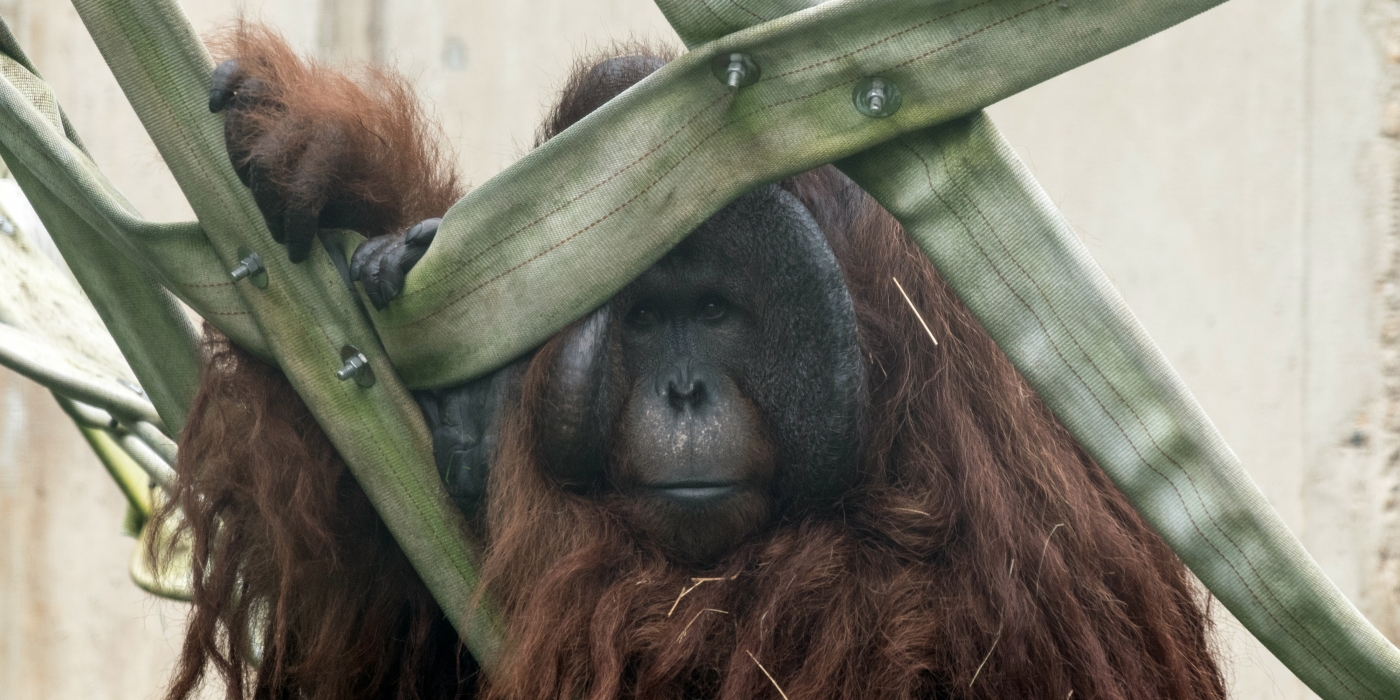
Primate keepers play an important role in orangutan conservation. We introduce visitors to these amazing animals, raise awareness about the threats they face in the wild and teach people ways that they can help make a difference for these animals in their native habitats.
To work with orangutans, it helps to have a lot of patience and the ability to think five steps ahead. Orangutans are wild animals and aren’t always gentle. Because orangutans are so smart, strong and curious, keepers have to be very thoughtful about the types of enrichment we give them. Sometimes, they can use those items in ways one wouldn’t expect. Lucy, for instance, gets a kick out of spitting water at keepers who pass by her enclosure. She seems to like the ‘surprise’ reaction she gets!
Know that orangutans can be a little naughty like this at times and do not take offense at their playful behavior. A good sense of humor will serve anyone who aspires to care for these and other primates well. Strike the right balance between respecting these animals for their wild nature while also celebrating their endearing (and sometimes silly) moments.
Planning a visit to the Zoo? Check out the Zoo’s orangutans in the Great Ape House and Think Tank. Plan your visit!
Allow your animal IQ climb to new heights with more stories from our keepers! Check out a variety of stories from all over Smithsonian’s National Zoo and Conservation Biology Institute here.
Related Species:


